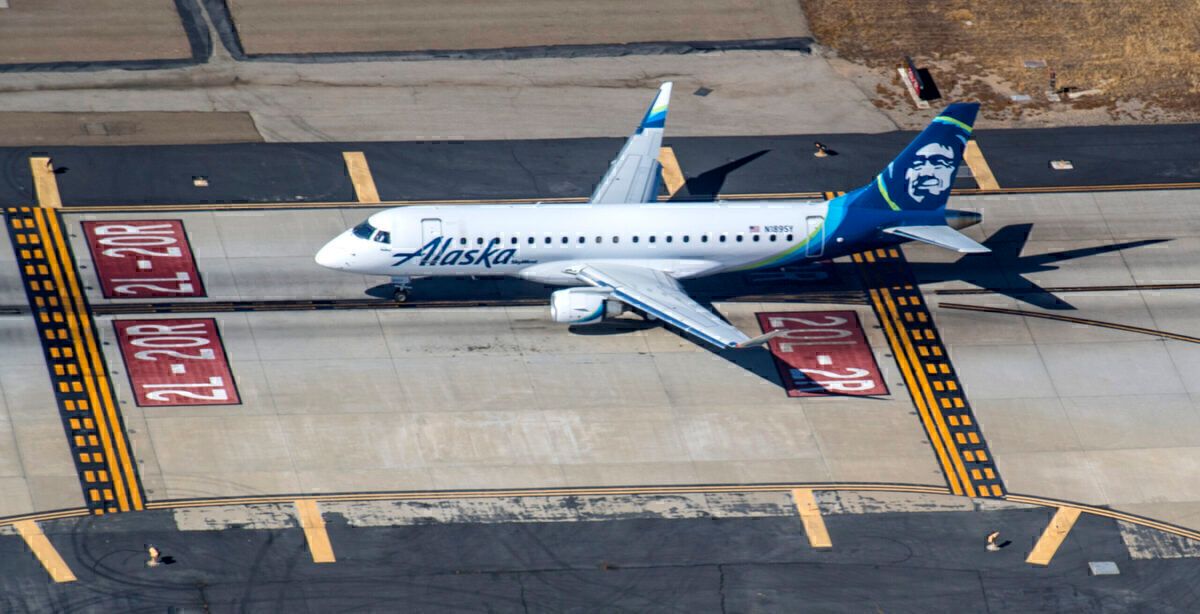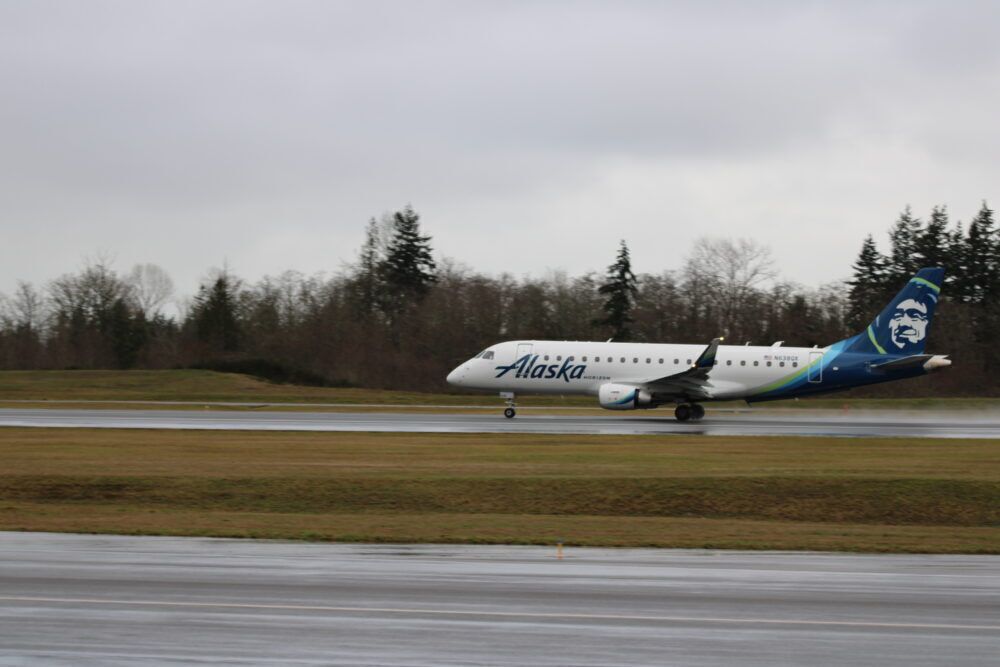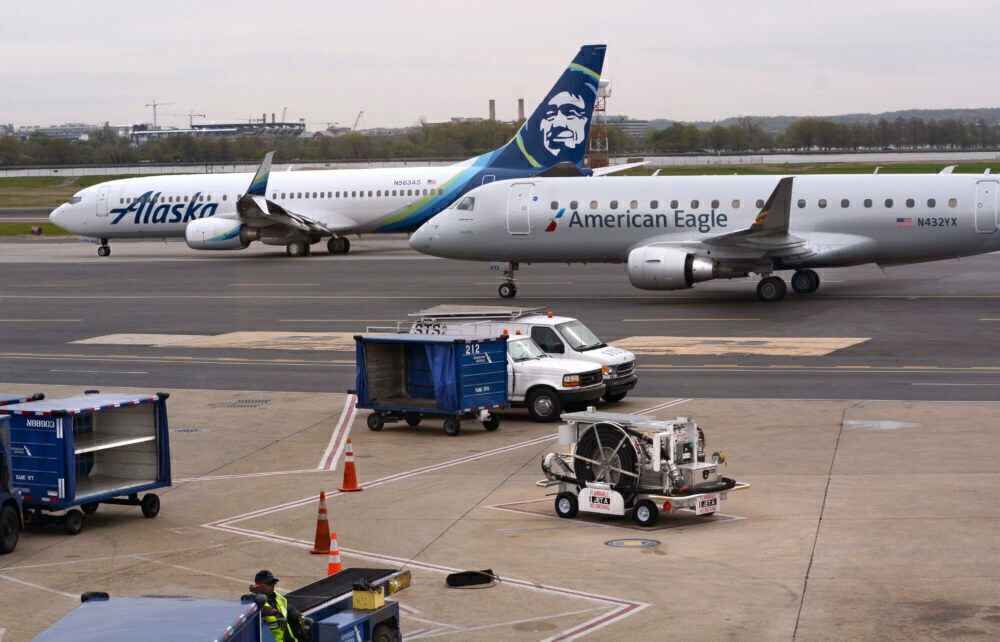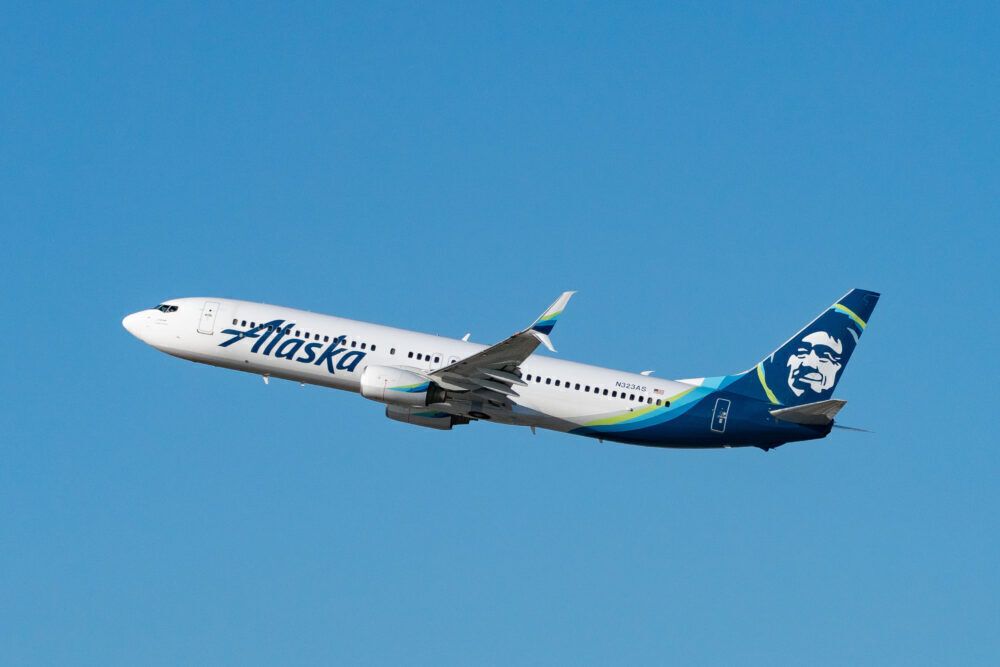Alaska Airlines has a slew of very interesting routes. However, one of the most interesting routes in the airline's network will launch later this year. Flying nonstop between Palm Springs and Austin starting on November 19th, this route is gearing up to be one of the most interesting, if not the most interesting, routes in Alaska's network. Here's what Brett Catlin, vice president of network and alliances at Alaska Airlines, said to Simple Flying about the route in an exclusive interview.
Alaska's Palm Springs to Austin route
First, it is important to recognize details about the route itself. Starting November 19th and running through April 18th, Alaska Airlines will connect Austin-Bergstrom International Airport (AUS) with Palm Springs International Airport (PSP) with five weekly flights using an Embraer E175.
The flight is scheduled to run on a leisure schedule. Departing AUS at 09:00 and arriving in PSP at 10:35, the airline's schedule will allow leisure travelers the opportunity to have almost an entire day in the city. The return flight leaves PSP at 11:05 and arrives in Austin at 16:10, allowing travelers to get home in time for dinner and to prepare for going back to work or school the next day. All times are local.
In addition, the Embraer E175 operating the route will offer different experiences onboard. There are 12 first class seats outfitted in a comfortable 1-2 configuration. This is followed by 12 extra-legroom economy seats and 52 standard economy seats. Seating 76 passengers, this jet is perfect for trying new, thinner routes.
Testing two different strategies
According to Mr. Catlin, the route is all about testing two of Alaska's most important strategies. As he stated in the interview on the two strategies:
"The first [strategy] is we have got ten spokes on the West Coast where we're building from a position of strength. We've long been the largest carrier in Palm Springs. It's a market that we have a lot of interest in where we've built up strong community support over the years. So, we've been keen to grow Palm Springs. You saw us add markets like Boise and Reno last year.
"So, Austin was a natural extension of that. Strategy number two was better connecting our points of strength to big American hubs and focus cities. We have this great crucible of demand in Palm Springs, and then American brings a strong demand for Austin. With those two forces at play, we think this is a market that can be really successful. Also when you layer on some demographic trends: this movement of people to Austin, its emergence as a major tech hub, a lot of folks in San Francisco, they love to visit Palm Springs, so we think those transplants in Austin, are going to love to visit Palm Springs."
The first strength is a long-held, core Alaska Airlines strength. The airline's exposure in California is incredible, and the airline only plans to keep growing. As the only airline based on the West Coast, its natural route network bias is toward connecting those points to new destinations and eliminating the need for connections, even in its own network where it already relies on strong origin and destination traffic.
The second strength is relatively new to Alaska Airlines. The alliance with American Airlines was announced in early 2020, and it has held even through the crisis. For Alaska Airlines, the partnership does not necessarily impede the airline's ability to grow. Instead, it now has new points and destinations it can add because of that partnership.
If you look at Palm Springs to Austin, this route would probably not have been on anyone's radar for a 2021 start. With American Airlines building out in Austin and Alaska being able to market those flights to Austin-area travelers who may be loyal to American or tend to book with American because of its growing nonstop portfolio out of Austin, this makes the market case for the route so much better.
This route may be here to stay
As always, there is an inherent risk with adding a new route. Even some of the best network planners do not get it right 100% of the time, and demand trends can shift. For example, airlines have been adding a host of flights to Bozeman (BZN) in Montana, and the city only keeps growing new air services, though if loads stay stubbornly low in the 60-70% range, then airlines will need to go back, cut some services, and fix their offerings.
Stay informed: Sign up for our daily and weekly aviation news digests.
When asked about concerns relating to loads in Palm Springs compared to the situation in Bozeman, Mr. Catlin saw the two markets as structurally different, and he is not terribly concerned about the route needing to go away:
"I would say Palm Springs' load factors are strong. It's actually a different dynamic where it used to be very seasonal where huge demand in the winter would taper off in the summer. What we've seen is actually it's become more of a year round market. So people that maybe would spend time in the winter, they bought a house there now, and they want to visit in the summer, even when temperatures are over 100 degrees. And so we're actually thinking about in Palm Springs how do we build it into more of a year round destination, whereas our focus before was always in that winter peak."
Palm Springs is also a different kind of destination, as he explained, putting it in contrast to Bozeman:
"Palm Springs is a market where it's less about getting a rental car and going to see the sights. It's more about being part of the community and the great festivals that exist and all the aspects within kind of Palm Springs proper, whereas Bozeman is all about getting to Yellowstone, the National Parks the outdoors. They're they're two very different markets in that regard."
In general, destinations that are more about culture and are in warmer climates tend to have better year-round demand than nature-themed and outdoor-oriented markets. Think cities like Los Angeles and Las Vegas that offer easy access to outdoor destinations while also offering plenty of things to do indoors, such as shows or casinos. Palm Springs, though certainly not as large as those markets, fits into a similar bucket.
Of course, time will tell if this route works. The airline is using the perfect plane to make the route a success and, if it is as successful as it could be, the route could easily convert to year-round service or see an upgauge in the peak season to larger aircraft like the Boeing 737.
Will you be flying Alaska Airlines between Palm Springs and Austin? Let us know in the comments!





